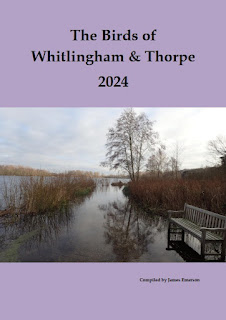January 2025
There were two birds of particular note at Whitlingham during January, firstly a Red-necked Grebe first seen on St Andrews Broad at Thorpe Marshes, which moved across to Whitlingham Great Broad where it remained until the end of the month. This was the first 'twitchable' bird here since February 2010 (there was a report from 31st Dec 2013, but it wasn't present the next day and no further details about it ever emerged). The second notable record was a White-fronted Goose, a rare species locally although wintering annually in the mid-Yare valley. Several were seen flying over on 19th Jan, but one landed and spent some time on the meadow south of Whitlingham Lane before moving onto the Great Broad. The highlight of the WeBS count was a couple of Goosander.




















































